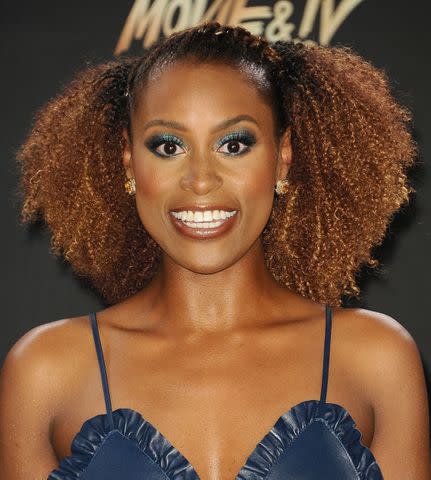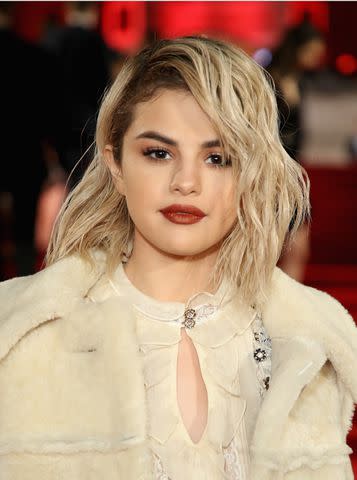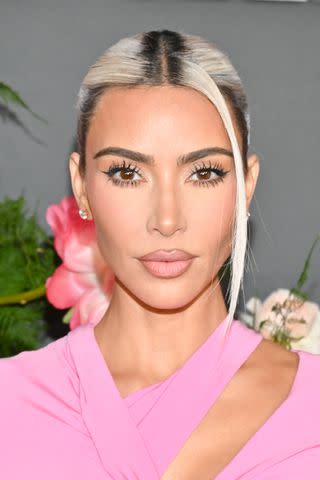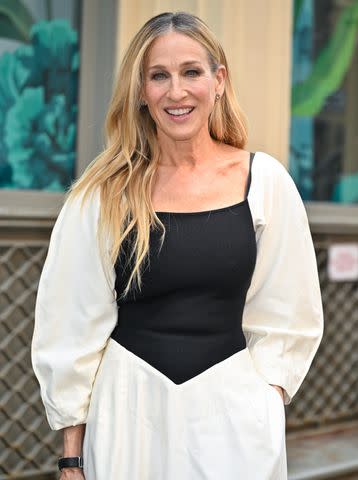Shadow Roots: How to Get Lived-In, Low-Maintenance Hair Color

Getty Images
Gone are the days when shadow roots (aka grown-out roots) were something to fix. Now, instead of calling your colorist for an immediate appointment to cover them up, these darker roots are in popular demand. What's more: Embracing this look is inherently cool and low-maintenance.
As artful grow-out reigns supreme, we turned to three colorists to break down everything you need to know about shadow roots.
Related: Low Maintenance Hair Color Ideas You Can Wear Year-Round
Meet Our Expert
Richy Kandasamy is a colorist and R+Co collective member.
Abby Haliti is a colorist and founder of Abby Haliti Color Studio.
Olivia Casanova is a hairstylist and co-owner of IGK Salon.
Shadow Roots, Explained
According to Richy Kandasamy, colorist and R+Co collective member, the shadow roots look is a hair coloring technique that intentionally leaves the hair’s roots darker than the rest, creating a shadow or gradient effect.
“This creates a ‘shadow’ effect and adds depth and dimension to the overall hair color,” adds Abby Haliti, colorist and founder of Abby Haliti Color Studio. “It’s a popular trend that can be achieved by blending a darker shade at the roots with a lighter shade towards the ends, creating a seamless transition.”
Haliti says that shadow roots can be a low-maintenance option, as they allow for longer periods between touch-ups. Kandasamy adds that it can also be used with other hair coloring techniques, such as highlights, balayage, or ombré.
Shadow Roots vs. Balayage vs. Ombré
The main difference between shadow roots and other hair color trends, such as balayage and ombré, is the placement of the color. Kandasamy explains that the shadow root focuses on the root area, creating a subtle, natural look with minimal contrast. Balayage, by comparison, offers a softer, blended appearance with highlights extending beyond the roots. Ombré delivers a very noticeable contrast of color and transitions from the roots to the tips.
Related: Balayage Hair 101: How to Get Gorgeous, Low-Maintenance Highlights
“While all three techniques offer unique effects, shadow roots specifically focus on creating depth at the roots,” adds Hiliti. “Balayage and ombré hair techniques create a seamless transition of color throughout the hair. Ultimately, the choice between these techniques depends on personal preference and desired outcome.”
“Your choice among these techniques should align with your desired look and maintenance level,” agrees Kandasamy. “The shadow root technique can be customized to suit various color preferences, whether you want a subtle, gradual transition or a more distinct contrast between the root color and the rest of your hair.”
Benefits of Shadow Roots
There are many benefits to shadow roots. Olivia Casanova, co-owner of IGK Salon, says that shadow roots are great for when you want something that looks natural. “It softens the hair color,” Casanova explains. “[This makes] it appear more natural with minimal lines.”
She goes on to say that shadow roots are a technique that can aid other coloring trends, such as balayage and ombré. So you don’t have to choose between one or the other!
Related: The 10 Best Blonde Hair Colors, According to Celeb Colorists
Kandasamy adds that shadow root coloring is very low maintenance compared to some of the other hair coloring techniques. “Since the roots are intentionally left darker, the contrast between regrowth and the colored hair is minimal, allowing you to go longer between touch-up appointments,” he says.
One last benefit to consider is that shadow roots are universally flattering when executed well. “Root shadowing works for every hair type, color, and texture,” says Casanova.
The Shadow Roots Process
The shadow root process is all dependent on your hair type, desired result, and techniques used by your stylist. But Kandasamy explains that generally, you can expect the following:
Consultation: “Your colorist will assess your natural [hair] level and the contrast you want between your roots and the rest of your hair,” he says. “[They’ll also go over] tone, placement, and any other preferences or concerns.”
Color Selection: Based on your consultation, he says that your stylist will select the appropriate hair color shades to achieve the shadow root effect. Here, they’ll consider your natural hair color and the color you want to achieve.
Application: Here, your hair will be sectioned off to make sure that the color application is even throughout. He says the root color generally will be applied to the regrowth area and then get softly blended into your highlights, with the root color typically darker than the rest of your hair and highlights. Then, once everything is processed, you will get your hair rinsed with shampoo and conditioner.
Styling: You may finish the treatment with styling techniques to enhance your overall look.
Related: This Is Why Your Scalp Is So Itchy After You Color Your Hair
Cost of Shadow Roots
The cost of shadow roots color varies depending on where you get it, the colorist you choose, and how complex your coloring process will be. Kandasamy says, on average, you can expect anywhere from $250 to $450 for a shadow root coloring session.
Haliti says that the shadow roots look is generally priced similarly to other hair coloring services, but to call and ask the salon first before booking an appointment. “It's best to contact local salons or hairstylists for specific pricing information as it can vary. They will be able to provide you with an accurate estimate based on your hair length, desired color, and any additional services you may require.”
As long as you consult with your colorist and go to a trusted salon, you’ll be able to give your hair elevated yet effortless-looking shadow roots. “Remember that hair color is a personal choice, and what works best for one person may not be ideal for another,” says Kandasamy. “Taking these factors into consideration will help ensure that shadow root coloring is the right choice for you and that you achieve the look you desire.”
With that, here’s some inspo for your next hair color appointment. Scroll down to see how our favorite celebs wear their shadow roots.
How Celebrities Wear Shadow Roots
Margot Robbie

Getty Images
“Margot Robbie is one of my favorite examples for a root shadow,” says Casanova. Here, Robbie’s darker blonde-toned roots provide dimension and depth to her bright blonde strands.
Issa Rae

Getty Images
Rae’s dark roots slowly transition into a warm auburn that really adds dimension to her natural curls. Only adding to the effect is the slicked-back half-up style.
Selena Gomez

Getty Images
Gomez can rock any hair color, but her dark roots really pop against her bleached blonde bob. With the wet-look hair effect, it’s the ultimate cool-girl look.
Kim Kardashian

Getty Images
Kardashian’s silver platinum strands were a moment, and we especially love how her dark roots were accentuated with sleek styles.
Sarah Jessica Parker

Getty Images
A mix of rich brunette and some gray growing in, Parker wears her shadow roots subtle against her golden honey shade.
For more InStyle news, make sure to sign up for our newsletter!
Read the original article on InStyle.

